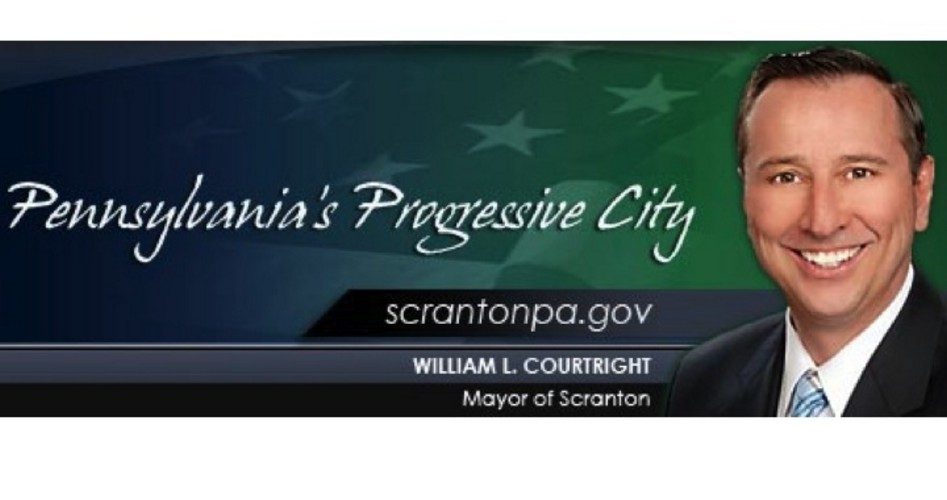
When Moody’s Investors Service said back in November that Scranton, Pennsylvania, had run out of options except for bankruptcy, Scrantonians began to think that was a pretty good idea. The city council just raised property taxes and trash pickup fees by nearly 60 percent, tripled rental registration fees, and upped public school taxes. It’s currently discussing how else they can milk the unhappy taxpayers to close the $20 million shortfall in its 2014 budget, including a 10-percent “drink” tax on local bars. Economics 101 is kicking in, and Mert Gavin, the owner of Mert’s Piano Bar, complained:
I am one of the last two bars that’s still downtown. Tink’s is gone. Whistle’s gone. Banshee’s is gone. Molly Brannigan’s is gone.
Do they expect I’m going to bail the city of Scranton out all by myself?
Richard Laytos, a Scranton native, wrote to the local paper: “The coffers are empty. Savings are gone. Our city is dying. File bankruptcy!”
Scranton, a city of 76,000 in northeastern Pennsylvania, has suffered economically for years, following the decline in the coal industry in favor of natural gas, a series of mining disasters, and hurricanes, which essentially erased much of the city’s economic base. The city has been on life support since 1992 when, under a state law designed to help cities like Scranton get back on their feet, a group called the Pennsylvania Economy League (PEL) began advising the mayor and the city council on remedies. Most of those remedies have been directed toward the hapless residents in the form of more taxes and fees, despite the fact that many of them are on fixed incomes, with a third living below the poverty level.
The most recent crisis in the summer of 2012 resulted in the mayor and city employees having their salaries cut back to minimum wage until the unions sued. At the time, the union-owned Amalgamated Bank offered to bail out the city using TRANS (tax and revenue anticipation notes) financing to provide the city with enough money to pay most of its current vendors. Amalgamated bailed the city out again last year but is now making any further loans contingent upon the city coming up with a balanced budget.
The city’s balance sheet is in simply awful shape. According to Moody’s, when all the outstanding debt is added up, it totals almost $200 million. But that doesn’t include another $100 million in unfunded pension and healthcare “legacy” liabilities. Nor does it include the union arbitration settlement of some $21 million awarded back in 2011, which was due and payable last year.
On the revenue side, nearly 40 percent of its budget is eaten up with debt service, pension contributions and healthcare benefits promised to retirees. That leaves precious little to begin to chip away at shortfalls in the pension plans, which currently have but 35 percent on hand to meet future obligations, or to repay principal.
And then there’s the ongoing conflict between the ex-mayor and the city council over just how to close the gap. The last time former Mayor Chris Doherty tried to raise taxes, the city council voted him down, and so he sued the council. As Eric Boehm, a reporter for the PA Independent, put it, they “rarely talk unless a judge is in the room.”
As Moody’s explained:
Scranton had intended to complete a $28 million debt issuance by mid-2013 and use the proceeds to pay an arbitration award and fund increases to the city’s 2013 pension contribution. However, in July [the underwriter negotiating the loan with Amalgamated] opted to delay … citing Scranton’s lack of progress in implementing its … recovery plan.
Scranton will begin fiscal 2014 with effectively a zero cash balance, creating significant operational strain until the bulk of its property tax revenue comes in in March.
Moody’s is afraid that this crisis won’t be resolved as readily as the one in 2012:
Scranton faced a similar liquidity crisis in June 2012 after it defaulted on its guaranteed revenue bonds…. Although the city cured the default swiftly, it was unable to access the capital markets for several months and had to temporarily reduce city workers’ salaries.
A second liquidity crisis could have more severe effects, including additional defaults.
No one on the council, or the new mayor Bill Courtright, seems interested in a Chapter 9 bankruptcy, despite the success Detroit had in using it to rein in excessive pension and health promises. Perhaps that is the reason such a discussion is clearly off the table. Instead, the new mayor is a reprise of the former one, introducing a $130 million budget that proposes even more taxes on the citizens, including a 57-percent increase in the real estate tax millage rates, and a 69-percent increase in the garbage collection fee (bringing that from $178 a year to $300), resulting in total new taxes for the average homeowner of more than $400 a year.
In addition to unhappy citizens such as Mert, at least one other person seemed to have a real grasp of reality in Scranton: Gary Lewis. Lewis blogged at ScrantonIsBroke, outlining and promoting bankruptcy as the only solution. He even ran for mayor, but gave it up when he realized he was swimming upstream. Following the election, Lewis, a lifelong resident of Scranton, moved to Indiana, explaining:
I did the math. I realized how much it was costing me to live in the city. That’s the story of my generation. There are a lot of kids like me who grew up, went to college at Scranton, but they turn 22 and move out of the city, and they don’t move back because it’s not a financially attractive proposition.
The unions aren’t interested in Scranton declaring Chapter 9 for obvious reasons. Said John Judge, president of the local firefighters union, “It’s a horrible idea. You take local control out of the hands of policymakers, and put it in some judge’s hand.” That’s the whole point, of course, as the city council seems to be completely beholden to the unions. Instead, former City Council President Janet Evans thinks there’s more blood to be squeezed from those taxpayers still remaining in Scranton:
We are in a different situation than Detroit. We … [are] willing and able to do everything within the scope of our authority to continue the recovery of the city of Scranton until it sits once again on sound financial ground.
She was unable to explain how milking the taxpayer for more funds to resolve union demands for higher pay and to fund union pension and retirement plans was going to “continue the recovery.” She also is apparently unfamiliar with Economics 101.
Mish Shedlock has been following the bankruptcies of Stockton, California; Detroit, Michigan; and other cities grappling with the arrival of reality — the day when the bills are finally coming due without the funds to pay them — and has concluded,
Officials in city hall are either complete financial morons, [are] beholden to the unions, or [are] beholden to their own pension plans that would take a hit if the city declared bankruptcy….
The economic jackasses in Scranton are going to extract every ounce of blood they can from taxpayers [and] then eventually declare bankruptcy anyway.
A graduate of Cornell University and a former investment advisor, Bob is a regular contributor to The New American magazine and blogs frequently at www.LightFromTheRight.com, primarily on economics and politics. He can be reached at [email protected].



